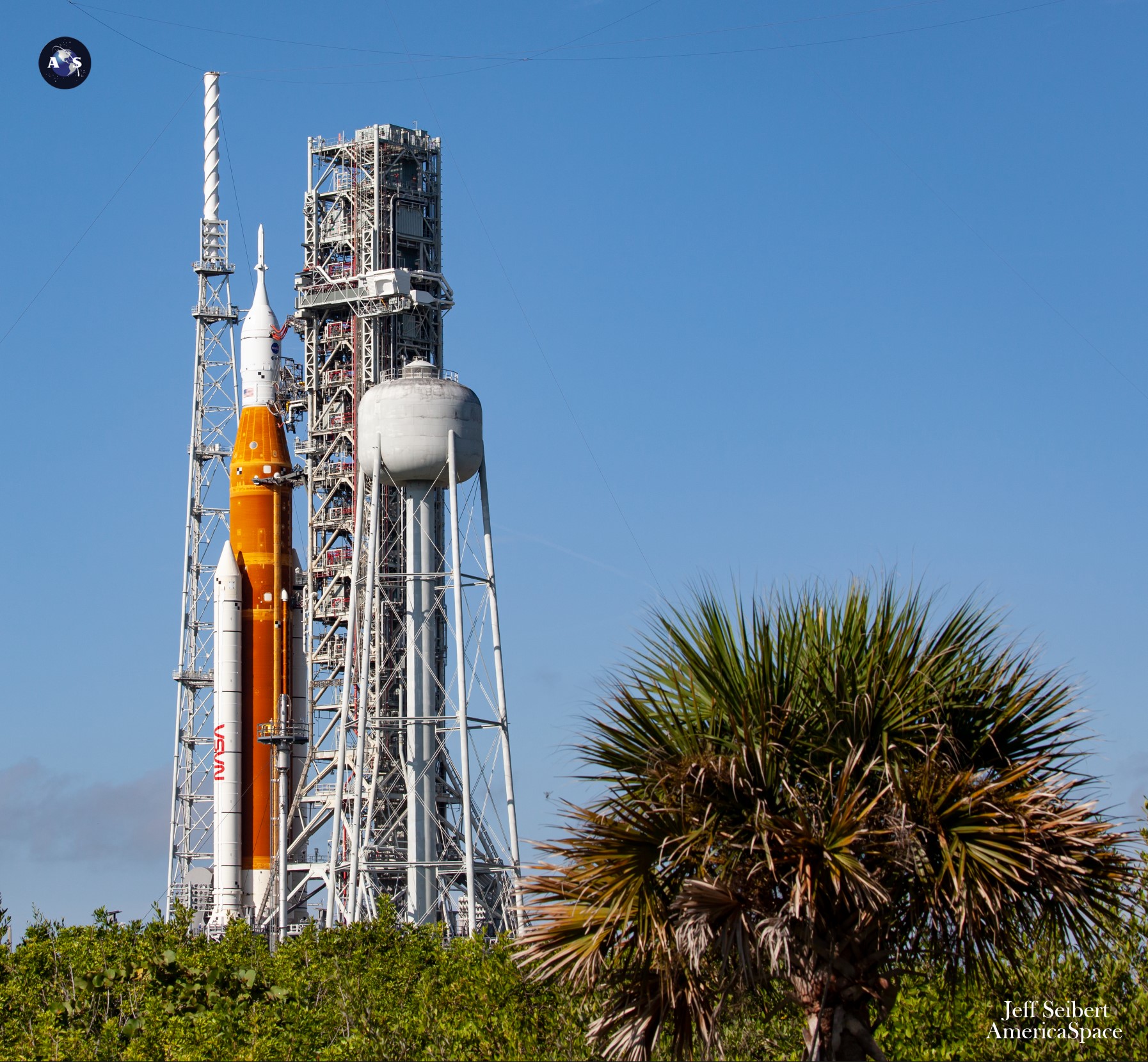
The world’s most powerful rocket-in-waiting must wait a little longer before it unleashes its fury on the Space Coast, followed a scrubbed launch attempt earlier today. Liftoff of the long-awaited Artemis I mission—the maiden voyage of the 322-foot-tall (98-meter) Space Launch System (SLS)—was called off by Launch Director Charlie Blackwell-Thompson at 8:34 a.m. EDT Monday. Efforts to thermally condition the four shuttle-era RS-25 engines at the base of the rocket’s Core Stage had met with stubborn resistance from Engine No. 3, which refused to reach its requisite temperature range.
Following rollout to historic Pad 39B at the Kennedy Space Center (KSC) overnight on 16/17 August and a smooth processing flow, launch teams formally kicked off the countdown on Saturday morning at L-46 hours. Ms. Blackwell-Thompson called her team to their stations at 9:53 a.m. EDT and clocks started ticking promptly at 10:23 a.m. EDT. This began what Artemis I Mission Manager Mike Sarafin on Monday afternoon described as “a very dynamic 48 hours” which brought us to today’s scrub.
As showers and thunderstorms rhythmically battered KSC, Pad 39B sustained no less than three strikes on its 600-foot-tall (200-meter) lightning protection system towers on Saturday afternoon; Tower 1 taking a single hit and Tower 2 a pair of hits. Their severity was evaluated and thankfully did not pass the minimum magnitude threshold to require action from the launch teams. The pad was cleared of all non-essential personnel last night, ahead of cryogenic tanking.
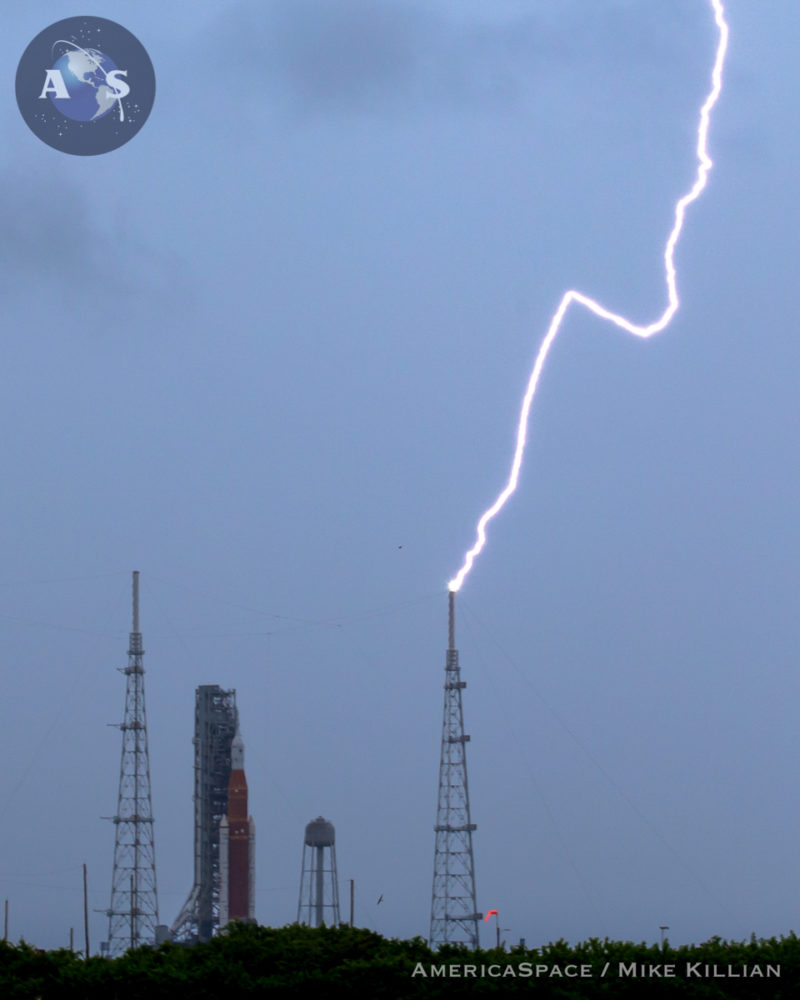
But this process of loading more than 733,000 gallons (3.3 million liters) of liquid oxygen and hydrogen into the giant rocket’s Core Stage and Interim Cryogenic Propulsion Stage (ICPS) was halted by an hour when KSC entered a Lightning Alert in response to a small lightning-producing weather cell. Mission rules dictate that tanking cannot occur if there is a 40-percent chance of rain or a 20-percent chance of lightning in the area.
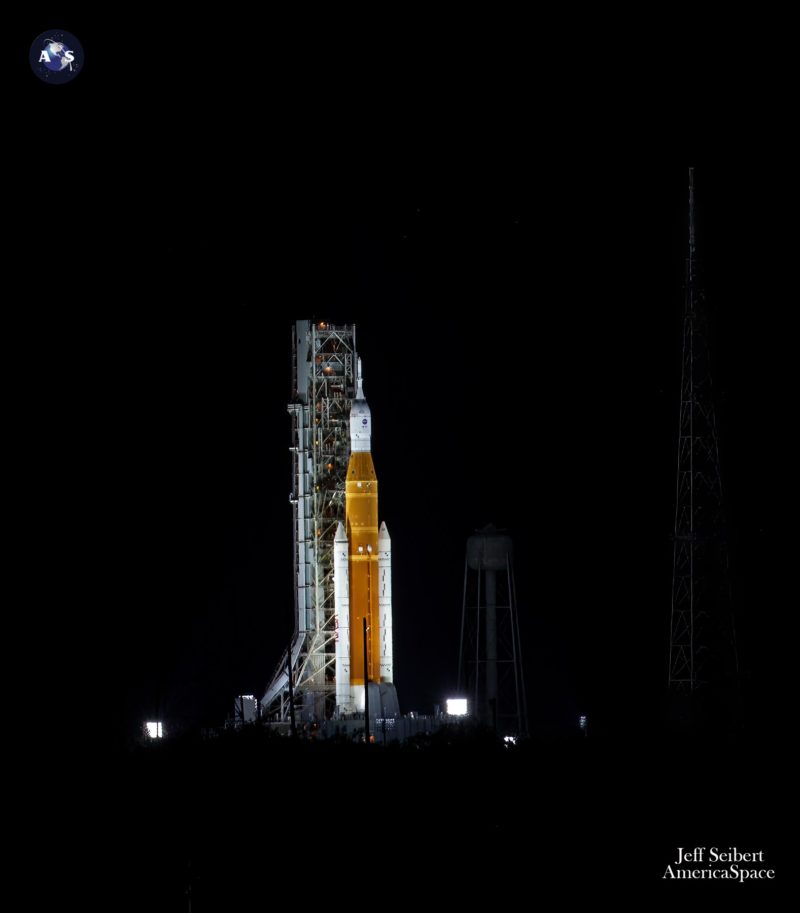
At length, with the Launch Weather Office reporting no evidence of lightning within 5.75 miles (9.2 kilometers) of the pad, Ms. Blackwell-Thompson authorized her team to begin loading the SLS. The multi-hour process began with liquid oxygen, followed by liquid hydrogen, into the tanks of the 212-foot-tall (64.6-meter) Core Stage.
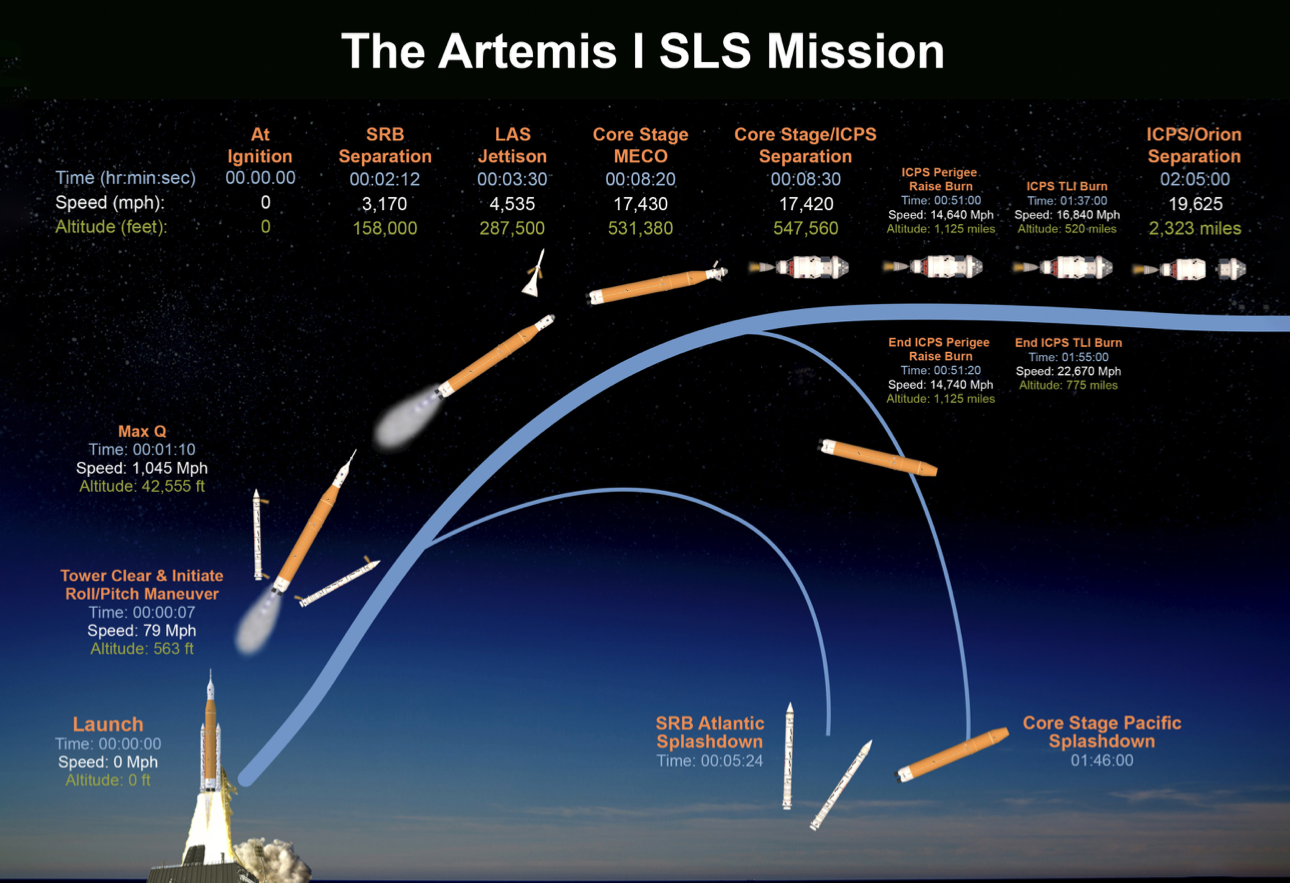
And it was during the transition from “slow-fill” to “fast-fill” the Core Stage with liquid hydrogen that the first gremlin reared its head. Shortly after 3 a.m. EDT, launch controllers spotted a “spike” in the amount of hydrogen allowed to leak into the “purge can”, a housing that covers the Tail Service Mast (TSM) umbilical’s 8-inch (20-centimeter) Quick Disconnect (QD). As part of efforts to troubleshoot the issue, engineers manually chilled the liquid hydrogen, then resumed fast-filling just after 4 a.m. EDT.
About 90 minutes later, fueling of the Core Stage was complete and the liquid oxygen and hydrogen tanks entered “replenish” mode, to be continuously refilled until close to launch time in response to the natural boil-off of the cryogens. At this stage, a “Go” was given to begin fueling the 45-foot-tall (13.7-meter) ICPS with its load of 22,000 gallons (100,000 liters) of liquid oxygen and hydrogen.
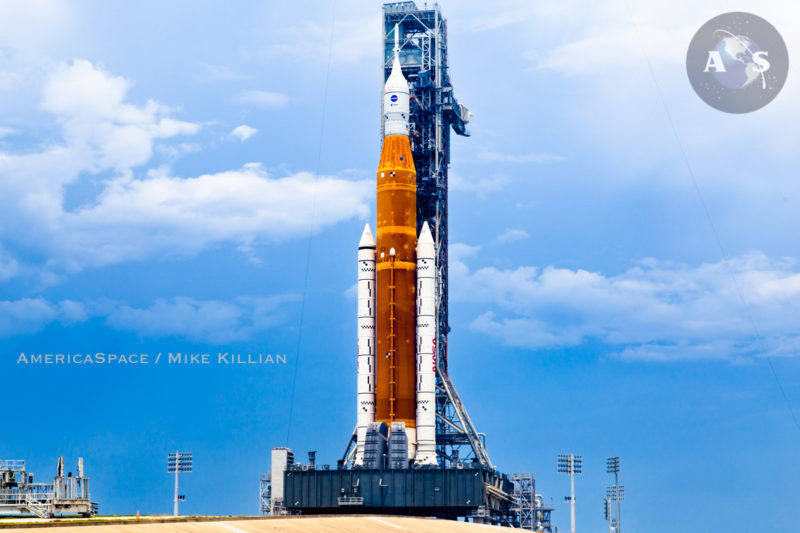
But as cryogenic loading progressed, other issues reared their heads. As the countdown headed into its final two hours before the 8:33 a.m. EDT opening of Monday morning’s “launch window”, engineers wrestled with a problem pertaining to one of the four shuttle-heritage RS-25 engines at the base of the Core Stage.
As part of efforts to “condition” the engines—and avoid thermally shocking them, prior to ignition—engineers adopted a process of increasing pressure on the Core Stage’s tanks. This sought to “bleed” some of the cryogenic propellant to the engines to get them into the requisite temperature range for ignition; a range which sits around 500 Rankine. Although the performance of Engines 1, 2 and 4 were all “on-trend”, according to Artemis I Mission Manager Mike Sarafin, and exhibiting the proper temperature signatures ahead of ignition, Engine 3 was not.
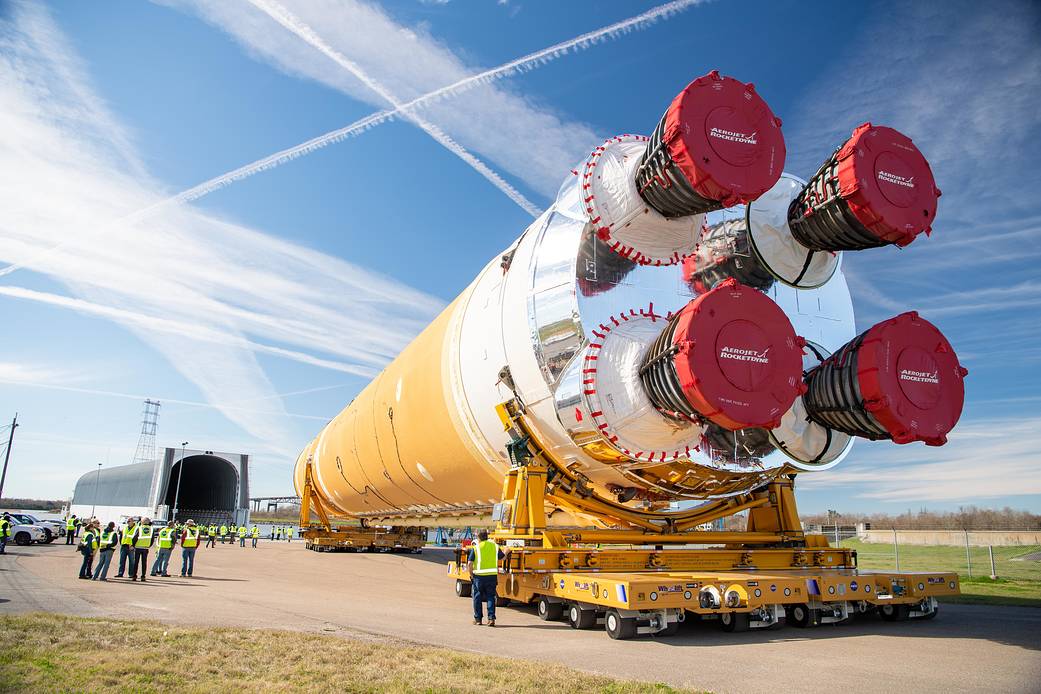
At the same time as the Engine 3 issue was being tackled, an apparent crack in Thermal Protection System (TPS) material atop a flange on the Core Stage intertank had also drawn engineers’ attention. The countdown clock was paused at T-40 minutes in a fruitless effort to identify and resolve the Engine 3 conditioning problem. Finally, at 8:34 a.m. EDT, with no immediate resolution in sight, Ms. Blackwell-Thompson formally called off Monday’s launch attempt and announced a scrub.
Mother Nature, in any case, eventually refused to play ball, despite an apparently positive weather outlook. Rain showers created a “No-Go” situation at the start of today’s window and lightning would have scuppered at T-0 at the end.
Speaking later on Monday afternoon, NASA Administrator Bill Nelson shared his pride in the launch team and declared that Artemis I is “not going to fly until it’s ready”. He stressed that “the complexity is daunting when you bring it all into the focus of a countdown”.
And Mr. Nelson should know. Thirty-six years ago, as a Florida congressman and payload specialist aboard Columbia—on the final shuttle flight before the Challenger tragedy—Mr. Nelson and his Mission 61C crewmates endured multiple scrubbed launch attempts, any one of which “would not have been a good day”. The administrator pointed out the need to “buy down that risk” ahead of committing to launch, and particularly before committing to the first flight of a new vehicle.
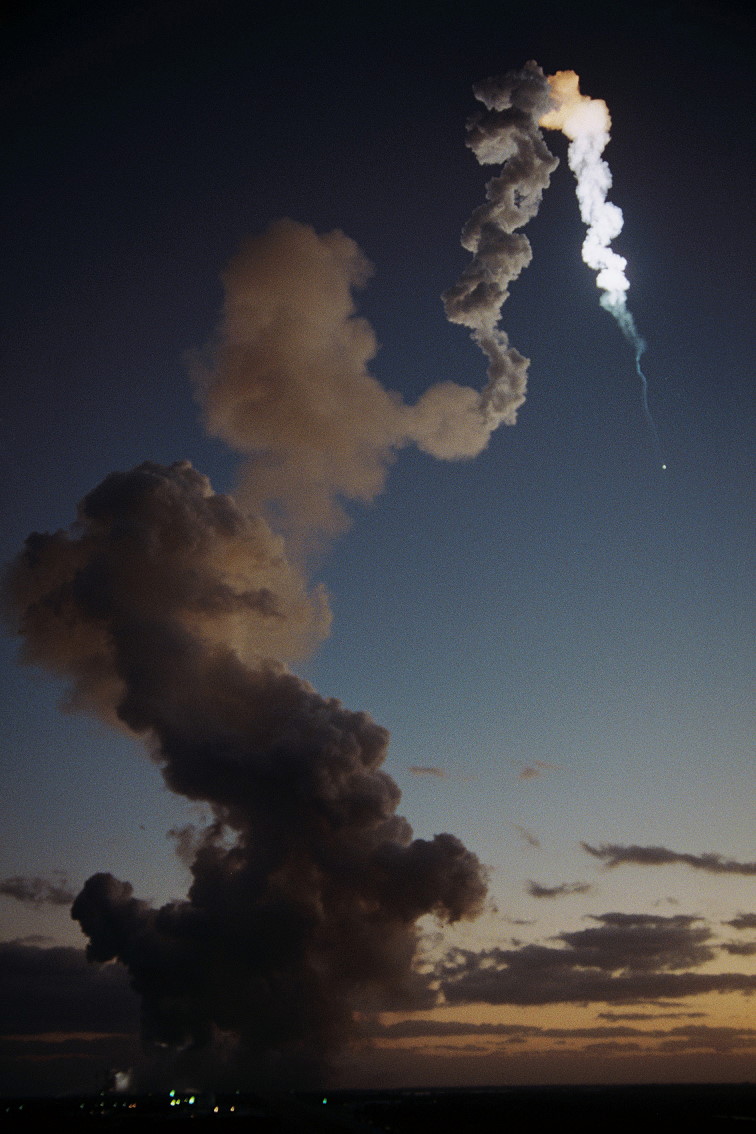
Speaking of today’s scrub, Mr. Sarafin explained that the issues faced “really caused us to pause” and the Mission Management Team (MMT) will reconvene at 3 p.m. EDT Tuesday to discuss a forward plan and hopefully decide a next launch attempt. Asked about the likelihood of aiming for the next available No Earlier Than (NET) target—a two-hour “window” from 12:48 p.m. EDT through 2:48 p.m. EDT on Friday—he quipped that there was “a non-zero chance” of that happening. In other words, he is not ruling Friday out.
But the weather remains the ever-present wild card, with an expectation that it will only be 40-percent favorable on Friday. “Deep-layered moisture begins to drop off as we enter the month of September,” noted the 45th Weather Squadron at Patrick Space Force Base in its L-4 briefing late Monday morning. “This should lower overall shower coverage late this week, though moisture will still be high enough to trigger early afternoon showers and storms during the launch window Friday.
“The time of the launch window will do us no favors, as the noon-to-3 p.m. timeframe will have the highest chance of storms generating along the Space Coast,” it was added. “As a result, our primary concerns will be the Cumulus Cloud Rule, Surface Electric Fields Rule, and the Flight Through Precipitation constraint.”
But Mr. Sarafin was bullish, declaring that “we’re gonna play all nine innings here.” On an equally positive note, he stressed that the data from today’s scrub points to an issue in the bleed system, rather than the engine interface itself, which may preclude the likelihood of a rollback to the Vehicle Assembly Building (VAB) and lengthy repairs.
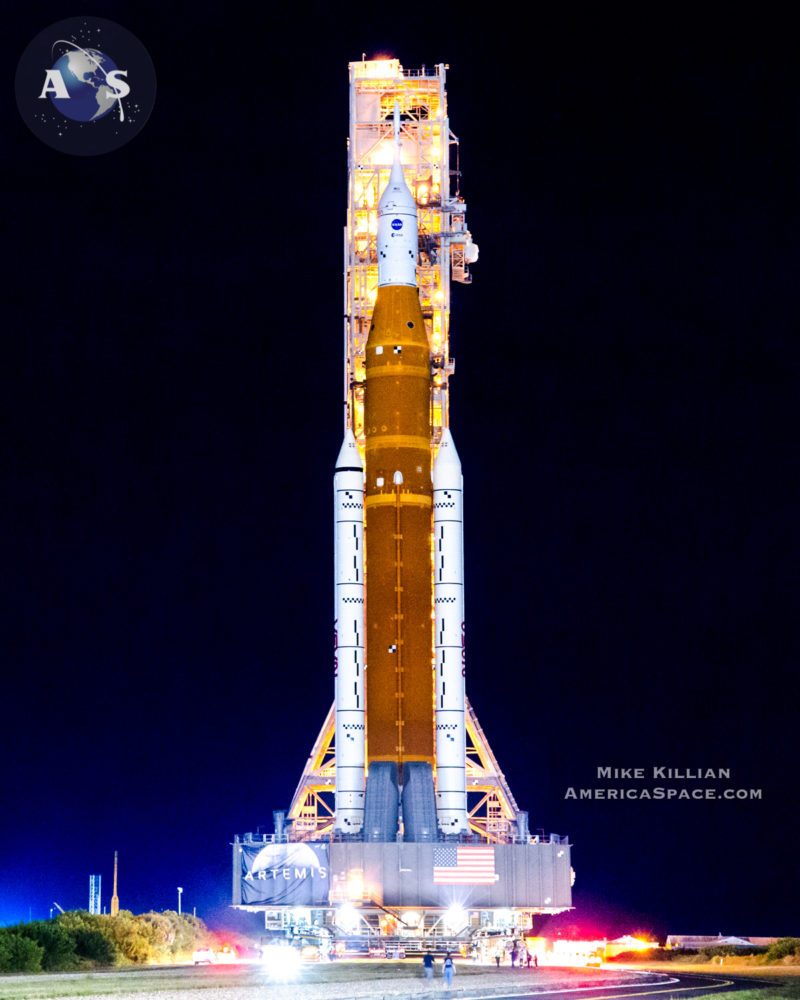
He told the media that “Friday is definitely in play” and that teams are now getting into an appropriate posture for a 96-hour recycle for the next launch attempt, with an expectation that commodities at Pad 39B will begin replenishment tomorrow. But a definite decision on whether Artemis I flies on Friday or not will be driven by the data.
“We won’t know until we know,” admitted Jim Free, NASA’s associate administrator for the Exploration Systems Development (ESD) mission directorate at the agency’s Washington, D.C., headquarters. “But we also won’t know until we try.”
.
.
FOLLOW AmericaSpace on Facebook and Twitter!
.
.
Missions » SLS » Missions » SLS » Artemis »



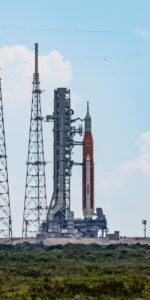

4 Comments
4 Pings & Trackbacks
Pingback:First SLS Flies, Turns Florida Night into Day - AmericaSpace
Pingback:Artemis I Orion Smoothly Completes Outbound Powered Flyby, Heads for DRO - AmericaSpace
Pingback:Artemis I Orion Smoothly Completes Outbound Powered Flyby, Heads for DRO - Space News
Pingback:First SLS Flies, Turns Florida Night into Day - Space News